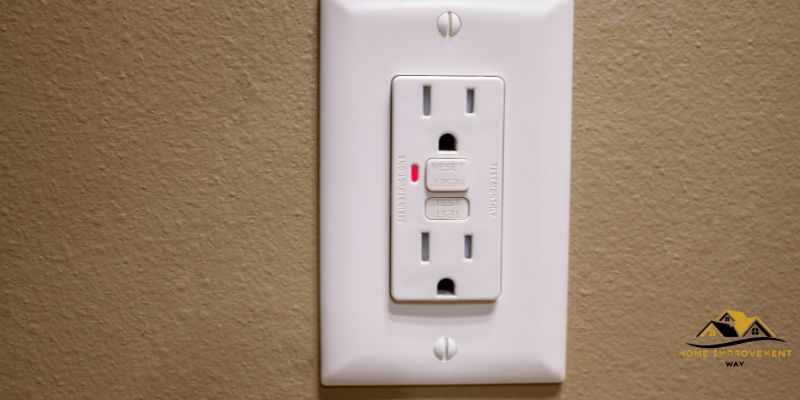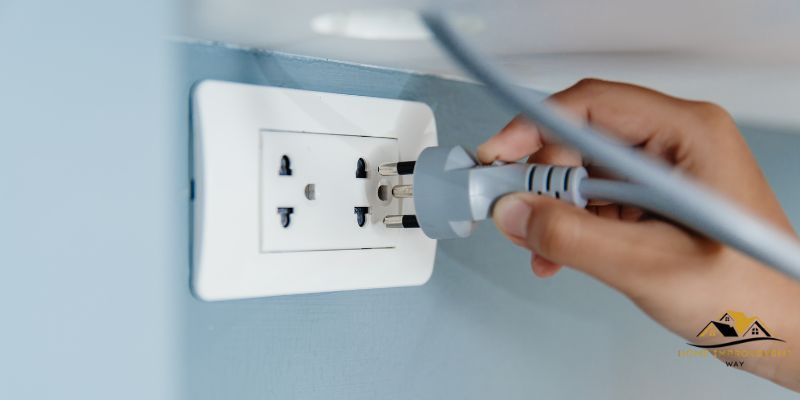To tell if an outlet is grounded, check for a third prong on the plug or a ground fault circuit interrupter (GFCI) outlet, which typically has a test and reset button. Is your outlet safe to use?
The answer lies in its grounding. Grounding is an essential safety feature that protects against electrical shocks and fires. Whether you’re plugging in a lamp or charging your phone, it’s crucial to ensure your outlets are grounded. We’ll explore the different indicators that can help you determine if an outlet is grounded.
By recognizing these signs, you can take necessary precautions to keep yourself and your electrical devices safe in your home or office. So, let’s dive in and uncover the secrets of identifying a grounded outlet.
Signs Of A Grounded Outlet
Grounded outlets are essential for electrical safety. You can tell if an outlet is grounded by checking for three prongs, a ground wire, or using a tester. Be sure to check for signs like electrical shocks or sparks for peace of mind.
If you want to ensure the safety of your electrical devices and appliances, it’s crucial to have properly grounded outlets in your home. Grounded outlets prevent electrical shocks and reduce the risk of fire hazards. But how can you tell if your outlet is grounded? Here are a few signs to look out for:
Visible Grounding
One of the easiest ways to determine if an outlet is grounded is to examine its appearance. Grounded outlets often have three prongs – two vertical slots and a round or U-shaped grounding prong. The grounding prong provides a path for stray electrical currents to safely dissipate into the ground, protecting you and your devices. So, if you see a third prong on your outlet, it’s likely grounded.
Another way to visually confirm grounding is to check for a metal grounding screw, which is usually located on the outlet’s cover plate or box. This screw connects a copper wire to the outlet, establishing a secure ground connection.

Testing With A Ground Fault Circuit Interrupter (gfci)
If the visible signs are inconclusive or you want to be absolutely certain about the grounding, you can test the outlet using a Ground Fault Circuit Interrupter (GFCI). A GFCI is a device designed to protect against electric shocks by sensing imbalances in electrical currents.
- Start by plugging the GFCI into the outlet you wish to test.
- Once plugged in, press the “Test” button on the GFCI.
- If the outlet is properly grounded, the GFCI will trip, cutting off power to the outlet.
- After the GFCI has tripped, press the “Reset” button to restore power to the outlet.
- If the GFCI does not trip when you press the “Test” button, it indicates that the outlet is not properly grounded and further inspection or repair is needed.
Remember, testing with a GFCI only provides a confirmation of proper grounding at the time of testing. It’s recommended to test your outlets regularly to ensure they remain grounded over time.
How To Fix An Ungrounded Outlet
If you suspect that your outlet is ungrounded, it’s important to address the issue promptly to ensure the safety of your home. An ungrounded outlet can increase the risk of electrical shock and damage to your electronic devices. In this section, we will discuss two possible solutions for fixing an ungrounded outlet: contacting a professional or installing a grounding wire.
Contacting A Professional
If you are unsure about your electrical skills or the complexity of the job, it is always best to hire a professional electrician to fix your ungrounded outlet. They have the knowledge, expertise, and tools necessary to do the job safely and effectively. Here are a few steps you can expect a professional electrician to take:
- Inspecting the outlet: The electrician will first examine the outlet to determine whether it is indeed ungrounded.
- Ensuring proper safety measures: They will take necessary precautions to avoid any electrical hazards while working on the outlet.
- Replacing the outlet: If the outlet is indeed ungrounded, the electrician will replace it with a grounded one.
- Testing the outlet: Once the replacement is complete, the electrician will test the outlet to ensure it is properly grounded and functioning safely.
- Providing necessary recommendations: If they find any other issues related to the electrical system, they will offer recommendations for further improvements.

Installation Of Grounding Wire
If you have some electrical knowledge and feel comfortable working with wiring, you may consider installing a grounding wire yourself. Here’s a step-by-step guide to help:
- Gather the necessary tools: Before you start the installation, make sure you have the required tools handy, such as wire cutters, a screwdriver, and electrical tape.
- Turn off the power: Always turn off the power supply to the outlet by switching off the corresponding circuit breaker in the electrical panel.
- Remove the outlet cover: Unscrew the cover plate and carefully remove it from the outlet box, exposing the wiring inside.
- Identify the grounding wire: Look for a copper wire or green wire connected to the metal box or grounding screw, which serves as the grounding wire.
- Attach the grounding wire: Connect a new grounding wire to the existing grounding wire using wire nuts or electrical connectors. Ensure the connection is secure, and the wires are properly enclosed.
- Ground the outlet: Attach the other end of the grounding wire to the grounding screw on the outlet or the grounding terminal if available.
- Test the outlet: Once the grounding wire is installed, carefully reassemble the outlet cover and switch on the power. Use a circuit tester to check if the outlet is properly grounded.
- Seek professional help if needed: If you encounter any difficulties or lack confidence in your work, it is advisable to seek assistance from a professional electrician.
Fixing an ungrounded outlet is crucial for the safety of your home and electronic appliances. Whether you choose to contact a professional electrician or install a grounding wire yourself, ensure the job is done correctly to prevent any potential hazards. Remember, electrical work can be dangerous, so prioritize safety and consult a professional if needed.
Conclusion
Determining whether an outlet is grounded is essential for ensuring electrical safety in your home. By following simple steps such as using a tester and observing physical signs, you can easily identify if an outlet is properly grounded. Remember, a grounded outlet is necessary to protect against electric shocks and potential fire hazards.
Keeping your electrical system up to code is a crucial aspect of maintaining a safe living environment for you and your loved ones. Stay vigilant and prioritize your safety by regularly checking the grounding of your outlets.


